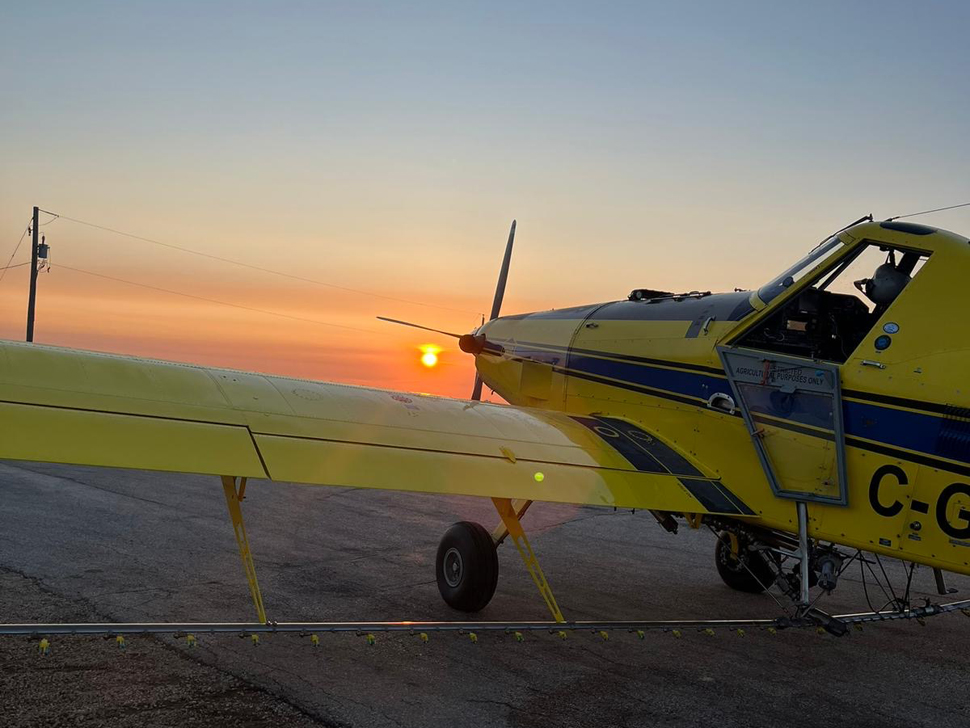The owner of Prairie Sky Crop Solutions south of Niverville says there is a narrow strip in the southeast where crops are looking absolutely beautiful.
Reg Friesen says that strip extends northeast of Niverville and then runs southwest. He notes it is maybe 15 miles wide, and crops along this path have been getting the timely rains.
"When flying over that area, the crops are just beautiful, like really just beautiful," shares Friesen. "You get a little bit further away from that strip, and you don't have to go very far, and the rainfall amounts are much, much less, and there's starting to become quite a bit more crop stress and issues like that going on."
Though Southern Manitoba has been blanketed by wildfire smoke for a large portion of the summer, Friesen says he does not think this is having a detrimental impact on our crops. He notes the soybeans look fine, while the corn is quite a bit ahead of where it normally is for this time of year. Having said that, he notes one way that the smoke is impacting his business is that there have been several days when their planes could not fly because of reduced visibility.
"Some of the fields that were done by air we had to do them later in the day or the next day, just because of visibility," he explains. "So that part has been a little challenging."
As for the other crops, Friesen says the early seeded wheat is starting to turn colour. He says it would not be surprising if they begin doing a pre-harvest application for desiccation early next week.
"Crops like that, they have already determined their yield," he says. "And again, I think in those areas you are seeing enough rain."
On the other hand, he says canola crops in the southeast are not as far advanced as the wheat is, noting that it is understandable considering wheat is seeded quite a bit earlier than canola.

Meanwhile, according to Friesen, they are not seeing any type of bug pressures out there. He notes they have been checking for insects in all the crops, including lygus bugs, diamondback worms in canola, armyworms, aphids in wheat, and soy aphids.
"We're not seeing any type of bug pressure out there either, so I think that that is going to be a good thing for the farmers," he points out. "We're stretched out from Morden, all the way into the Interlake, and we're not seeing much of anything anywhere. So, that's a good plus for the farms."
As for hail, Friesen says there was a strip that was hit earlier this season, stretching from Ste. Agathe down to St. Pierre. He notes it was only a very thin strip, yet it did a lot of damage.
As we get closer to the start of harvest, Friesen says with pods filling on soybean plants and corn, it would be great to have crops receive half an inch to an inch of rain every seven to ten days. And while the canola could also benefit from the rain, Friesen says the early seeded wheat will probably not benefit from any additional moisture.
"When the wheat becomes a little closer to harvest, farms don't typically want to see rain," he says. "You lose your colour on the wheat, which may take it from a one to a two."
Friesen says one thing that has been missing this summer has been the widespread, gentle rain. He notes we get thunderstorms roll through and cells that drop a lot of rain. However, the long soaking rains have been absent.
As we near the end of July, Friesen says we are probably now only a few weeks away from the start of harvest. He says combines will certainly be rolling in August already, possibly as early as mid-month.
